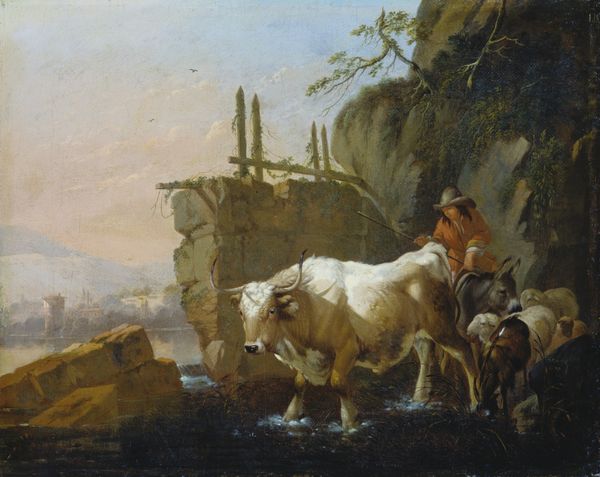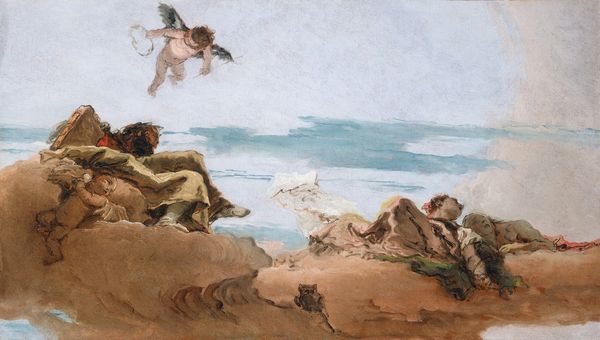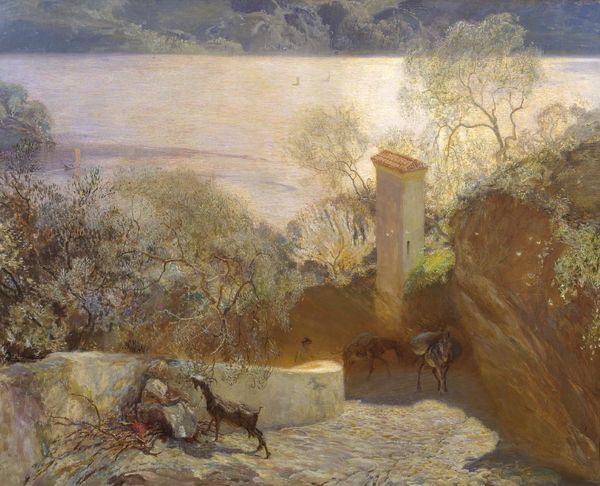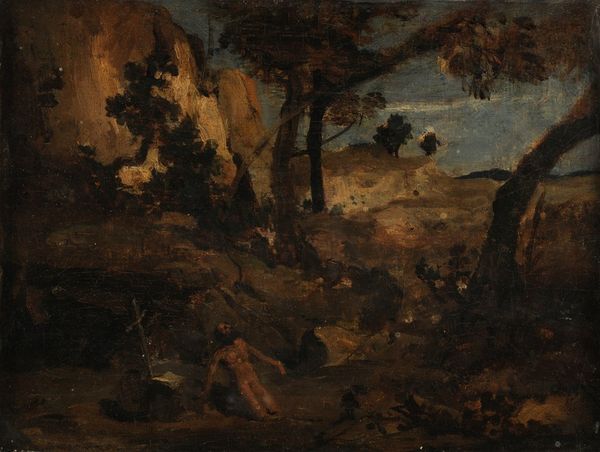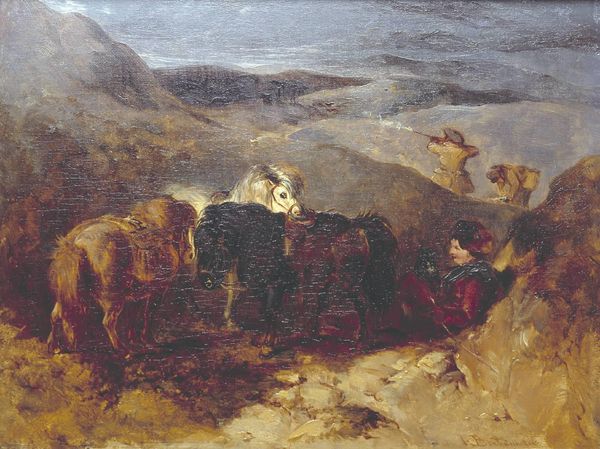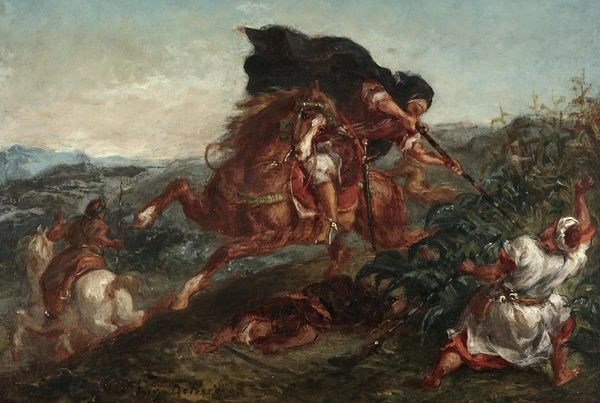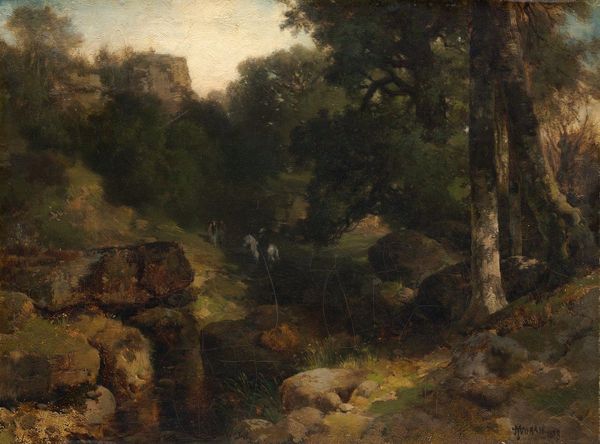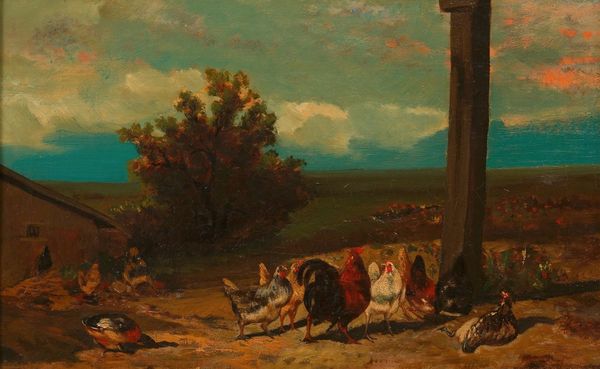
Copyright: Public Domain: Artvee
Editor: Arnold Böcklin’s oil painting "Pan Frightening A Shepherd," made in 1865, certainly conveys a sense of chaotic movement! The poor shepherd is covering his ears as goats scatter down a rocky slope. And is that Pan himself lurking above? What do you see in this piece? Curator: I see Böcklin tapping into the anxieties of his era, anxieties linked to industrialization and the perceived loss of connection with nature. Here, the figure of Pan, a pagan god of the wild, isn't just a mythological character; he becomes a symbol of the untamed forces threatening the modern, ordered world. Böcklin painted this during a time of massive upheaval, so what could the shepherd represent in contrast to the looming figure of Pan? Editor: Perhaps the shepherd symbolizes a kind of innocence or vulnerability, exposed to the raw power of nature? Curator: Exactly. And Böcklin's deliberate choice to depict this scene through a Romantic lens is crucial. Romanticism in art and literature often championed the sublime and the irrational, qualities suppressed by Enlightenment values. Böcklin positions nature as dangerous and even violent, contrasting the era’s rationalization efforts to control nature, or worse, claim that the "wild" must be tamed or eliminated. This is less a scene of bucolic pastoral life and more a confrontation between civilization and its suppressed primal instincts. It suggests that, perhaps, we have misunderstood our own place in a complex ecosystem. What do you make of that bright ball near the Shepherd? Editor: Interesting point... Is that an orange he dropped, now a symbol of disrupted idyllic life? It's almost mocking the shepherd's fear! I never thought of Romanticism in this critical light. Curator: These artists' visual statements opened dialogue and shaped public perceptions. Considering the political and environmental issues in art of the current moment, Böcklin's statement still echoes. Editor: I’ll certainly never look at Böcklin the same way. Thanks for pointing out the socio-political context!
Comments
No comments
Be the first to comment and join the conversation on the ultimate creative platform.


